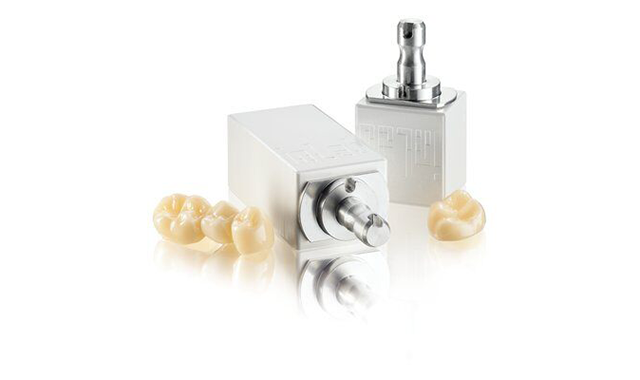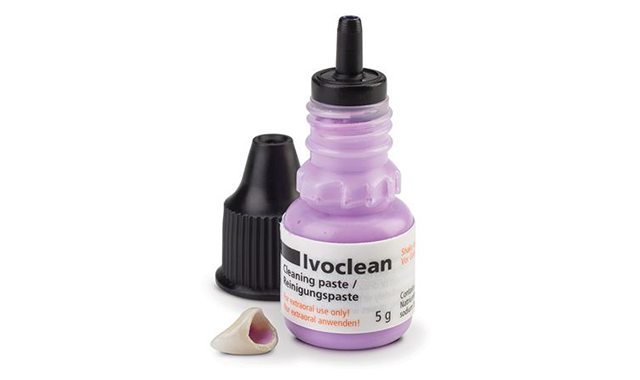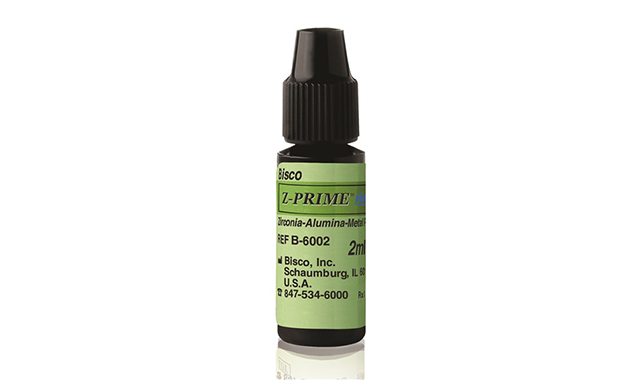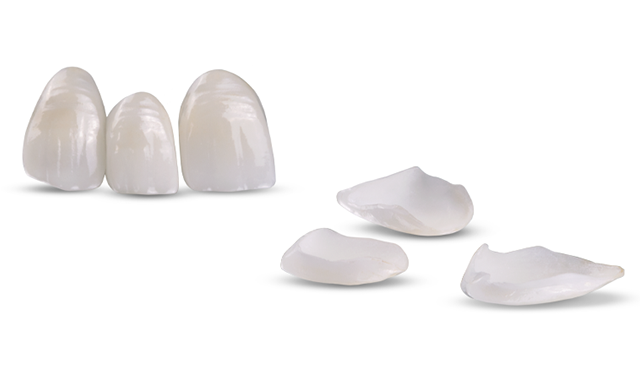Best practices for bonding with zirconia
How to simplify the zirconia-bonding process for successful restorations.

Although zirconia has been around for decades, it is only recently that its popularity has skyrocketed. Zirconia is an incredibly strong material with a flexural strength five times greater than other ceramics. With recent advances in esthetics and CAD/CAM technology, zirconia is now being applied for a wide variety of clinical indications including single crowns, implants, endodontic posts, and both anterior and posterior dental restorations.
“I think when dentists were introduced to zirconia, we saw it as a strong but ugly material,” Dr. Jason Goodchild, director of clinical affairs at Premier Dental, says. “Meaning, with the strength of the material came poor esthetics, and we could only use it for posterior teeth or where esthetics were not crucial. That has totally changed and now we can have both through the evolution of translucent or esthetic zirconia materials.”
3M Chairside zirconia blocks

At first, zirconia was only indicated for crowns, but that has changed over time, says Dr. Rolando Nuñez, manager of clinical research at BISCO.
“In the beginning, zirconia was indicated for crowns-they were opaque and looked dull. Nowadays, there are multiple applications, anything from veneers to implants and denture structures. So, the future looks very promising.”
However, as esthetics improve and applications for zirconia increase, new challenges arise for clinicians. To ensure bonding success with zirconia restorations, there are several important things for clinicians to keep in mind-because the esthetics, composition, or makeup of a restoration are irrelevant if it doesn’t stay bonded to the tooth.
Continue reading on the next page...
Understanding the bonding procedure
Bonding with zirconia can be problematic; since the majority of bonding protocols are based on bonding to glass, which zirconia is not, different steps need to be followed.
“Zirconia is a ceramic, but it is not an etchable ceramic, nor does it contain silica,” Dr. Nuñez explains. “It cannot be etched or silinated. So, the bonding procedure is different than the one used for feldspathic porcelain or lithium disilicate.”
In fact, not recognizing the different needs of zirconia can be a critical mistake.
“One of the most common errors when bonding a zirconia crown is when a clinician treats the zirconia like it is lithium disilicate,” Dr. Nathaniel Lawson, director of the division of biomaterials at the University of Alabama at Birmingham School of Dentistry, says. “Feldspathic porcelain and glass ceramics (like lithium disilicate) were glass containing. Therefore, some glass was selectively removed by etching with hydrofluoric acid. This created surface texture. Then a silane primer was used to chemically bond to the remaining glass. This won’t work with zirconia.
Preparation and decontamination
One of the biggest errors a clinician can make when bonding to zirconia is not preparing-and decontaminating-the crown adequately.
“One of the most important factors is how you prepare the intaglio (inside surface) of the zirconia crown before it is definitively cemented,” Dr. Goodchild says. “Not adequately preparing the intaglio of the crown before cementation is a critical mistake.”
Dental zirconia (or zirconium oxide) bonds to phosphates. A core problem is that saliva contains a significant amount of phosphate. This means that the presence of saliva contaminates the surface of zirconia restorations and hinders the development of a strong bond due to the depletion of bonding sites. Essentially, Dr. Lawson explains, “phosphate-based bonding sites can be blocked by phospholipids present in the saliva.”
Ivoclean from Ivoclar Vivadent

Naturally, during try in, the zirconia will be exposed to saliva. So, before clinicians perform final bonding, it’s critical to decontaminate the zirconia intaglio.
“Simply rinsing out the saliva does not remove phosphate groups that are bonded to the zirconia,” explains Dr. Sarah Jebreil, a cosmetic dentist practicing in Newport Beach, Calif. Instead, she recommends a cleaning product such as ZirClean™ (BISCO Dental Products) or Ivoclean (Ivoclar Vivadent) to decontaminate the surface-both of which can also be used on lithium disilicate and porcelain as well as zirconia.
Continue reading on the next page...
“Placing a product like these into the restoration allows the saliva phosphates that were bonded to the crown to become bonded to the zirconia oxide in the ZirClean or Ivoclean,” she explains.
Dr. Lawson identifies saliva contamination and a lack of understanding of proper decontamination as critical factors that have hindered the success of zirconia restorations in the past.
“Initially, clinicians attempted to use phosphoric acid to remove the salivary phospholipids,” he says. “The issue was that phosphoric acid would also bind to the phosphate-binding site on zirconia. Therefore, an alternate cleaning method should be used. Some options include cleaning solutions, re-sandblasting, or potentially sodium hypochlorite.”
Sandblasting or light particle abrasion can be effective ways to enhance bonding by creating a fresh zirconia surface to bond to (Dr. Nuñez recommends sandblasting with 50-micron aluminum oxide powder at 40 psi for 20 seconds). It is important to remember however, that if the zirconia is not first decontaminated, the restoration is destined to fail. Several studies have found that this combination of chemical and mechanical pretreatment is necessary to ensure long-lasting, effective bonds1.
Zirconia primers
In addition to decontamination and sandblasting, zirconia primers are an excellent tool for increasing bond strength. Since conventional silane coupling formulas cannot bind to metal-oxide ceramics, ceramic primers have unique adhesive monomers that allow them to bond to zirconia.
“Bonding to zirconia relies on alumina sandblasting to create surface texture,” Dr. Lawson says. “It also requires the use of a different primer, 10-Methacryloxy dihydrogen phosphate (MDP), to chemically bond to zirconia. The MDP primer works through a phosphate-based bonding site on the zirconia.”
Skipping the use of a primer can have negative repercussions for the restoration, and Drs. Nuñez, Jebreil, and Goodchild all emphasize the importance of zirconia primers.
“A potential missed opportunity during the bonding process is not utilizing a zirconia primer,” Dr. Goodchild explains. “These primers contain an acidic phosphate monomer and act to enhance the bond.”
Z-Prime Plus from BISCO

And primer options are plentiful. Some, like BISCO’s Z-PRIME™ Plus, are comprised exclusive of phosphate and carboxylic monomers and exclude silane completely, as it does not increase zirconia adhesion.2 Other primers include the monomers for both glass ceramic (silane) and zirconia (MDP), reducing the need to buy multiple types of primer. There are also cements (such as Unicem 2, from 3M ESPE) that contain the primers for ceramics, so no additional primer application is necessary. Thanks to the variety of primers on the market, clinicians should have no problem finding one that integrates easily into their workflow.
Continue reading on the next page...
Bonding and cements
Lastly, as with any restoration, the strength of the bond is critical to success. This means selecting the appropriate cement or bonding agent.
While effective, luting cements are generally poor choices for zirconia restorations simply due to esthetics. Since luting cements are so opaque, they will negate the translucency of zirconia and ruin shade matching.
To preserve esthetics while also ensuring a strong bond, many clinicians are turning to resin cements.
“The self-adhesive category of cements is probably most popular for use with zirconia,” says Dr. Goodchild. “Clinicians are looking for a resin cement that balances the physical properties (e.g. strength) with ease of use. I also want product flexibility that promotes efficiency, because now I can use one product for many different clinical situations, rather than having to stock multiple products.
Self-adhesive dual-cure resin cement has been found to be more effective than regular cements for ceramic crowns and bridges; in fact, one study found zirconia crowns were twice as likely to loosen when adhered with zinc-phosphate cement as opposed to a self-adhesive dual-cure resin cement.3
But Dr. Lawson points out that not all zirconia restorations need to be bonded with a resin cement.
“Not all zirconia is the same,” he says. “In many cases, zirconia has a sufficient strength that a RMGI cement can be used. [Resin] bonding is necessary when there is insufficient retention of the crown preparation. In fact, a recent Practice Based Research Network study reported that only 30 percent of zirconia crowns were bonded with resin cement.4 Some zirconia though, such as 5 mol% yttria containing zirconia, does benefit in strength from a bonding with resin cement.”
Vivaneer veneers from Glidewell

New products, knowledge and technology are making zirconia bonding easier and more predictable than ever, and helping clinicians create long-lasting, esthetic restorations.
“With the advent of tools like Ivoclean and Z-PRIME Plus, we are able to get a much better bond than in the past,” explains Dr. Jebreil.
“Despite the challenges, zirconia can be bonded,” Dr. Lawson adds. “It is possible to bond to zirconia following the correct protocol.”
References
1. Inokoshi M, De Munck J, Minakuchi S, Van Meerbeek B. Meta-analysis of bonding effectiveness to zirconia ceramics. J Dent Res. 2014;93(4):329-334.
2. Brown, Douglas. Creating solutions to clinical challenges: Bonding to zirconia, alumina and metal with Z-PRIME Plus. BisDent Globe, 2010;14(1)
3. Ortorp A, Kihl ML, Carlsson GE. A 5-year retrospective study of survival of zirconia single crowns fitted in a private clinical setting. J Dent. 2012;40(6):527-530.
4. Lawson, NC Choice of cement for single-unit crowns. Journal of the American Dental Association. 2019;150(6):522-530.
ACTIVA BioACTIVE Bulk Flow Marks Pulpdent’s First Major Product Release in 4 Years
December 12th 2024Next-generation bulk-fill dental restorative raises the standard of care for bulk-fill procedures by providing natural remineralization support, while also overcoming current bulk-fill limitations.